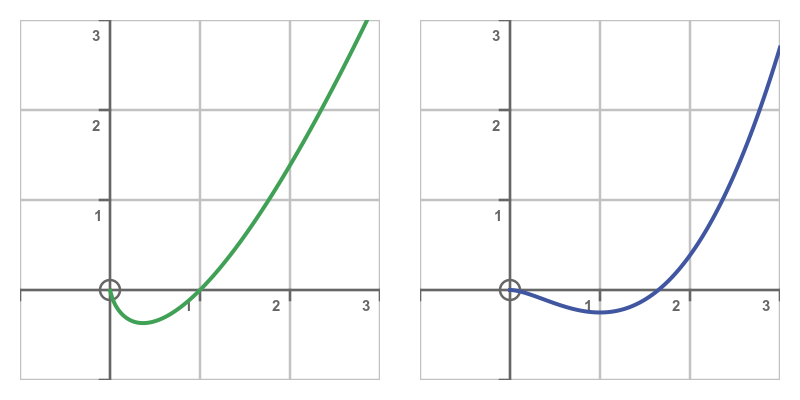Integration by parts - LIATE rule
The technique of integration by parts can often be used for solving complex integrals, particularly if we need to integrate a function that can be expressed as the product of two other functions.
The basic integration by parts formula is:
However, it can sometimes be difficult to decide how best to proceed.
The LIATE rule is a simple rule of thumb to help with this. It isn't foolproof, so we should always be prepared to try a different route if the LIATE rule doesn't give a good result. Indeed, there is not even consensus on the order of the rule, and some people use the ILATE rule (the slight difference will become clear soon).
Also, of course, the LIATE rule only covers certain classes of functions. These include all the very common mathematical functions, but if we ever need to integrate an expression involving other types of functions, the rule won't directly help us. But we can still apply the principles of these rules to other function types.
In this article, we will explain the rule and give an example of each of the cases.
The LIATE rule
The LIATE rule recognises five main types of function that commonly occur in integration problems:
Logarithmic (L), for example ln(x)
Inverse trigonometric (I), for example arcsin(x)
Algebraic (A), for example x²
Trigonometric (T), for example sin(x)
Exponential (E), for example exp(x)
If we are trying to integrate the product of two functions s and t, there are two possible ways to do it:
We could substitute s for f, and t for g'. If we do that, the integration by parts rule will require us to differentiate s (to find f'), and to integrate t (to find g).
Alternatively, we could substitute t for f, and s for g'. If we do that, the integration by parts rule will require us to differentiate t (to find f') and to integrate s (to find g).
Which should we choose? Of course, it depends on the functions s and t. Firstly, if either s or t is difficult to integrate, then we should not use that function for g'. This is the reason for the first two rules. Logarithmic functions and inverse trig functions are difficult to integrate so we should try to use these functions as f wherever possible.
Trig and exponential functions have a slightly different problem. They are fairly easy to either integrate or differentiate, but the result of either process is no simpler than the original. For example, if we differentiate the sine function, we get the cosine function. If we integrate sine, we get the negative cosine. Neither of those transformations is likely to make the equation any easier. So in that case we might as well use that function as g' so we integrate it. Then there is a chance that the other function might become simpler when we differentiate it.
Logarithmic functions
If one of the two functions is logarithmic, LIATE suggests we should try making that the first function, f. So to solve this integral:
We should choose f and g' in this order (rather than the other way round):
Integration by parts requires us to also know f' and g. We can find f' by differentiating f. The derivative of ln is a standard result:
We can find g because it is the indefinite integral of g'. That is to say, if we differentiate the following function g we will get g':
If we plug our values of f, g, f' and g' into the indefinite integral formula:
We get this result:
The integral term can be solved easily as it is a standard result:
This simplifies to:
Here is a graph of the original function on the left, and the integral on the right:
Inverse trigonometric functions
Inverse trig functions are a little tricky to integrate anyway, so we will pick a simple example. We will integrate the inverse cosine function multiplied by 1. This is quite a useful trick in itself because it converts a difficult integral into a differentiation problem.
Keep reading with a 7-day free trial
Subscribe to GraphicMaths Newsletter to keep reading this post and get 7 days of free access to the full post archives.









